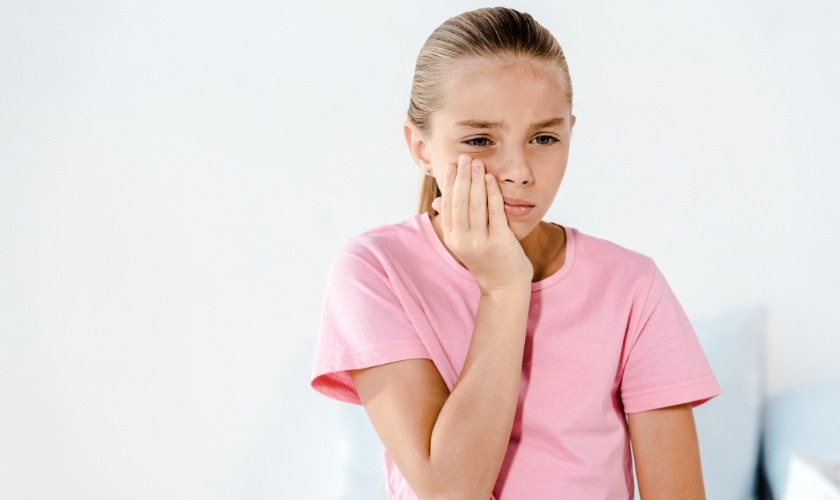
Experiencing throbbing tooth pain after a crown can be a frustrating and uncomfortable issue. Whether you’ve just had a crown placed or you’ve had one for a while, pain can arise for several reasons. Understanding the causes and knowing how to manage this discomfort is essential. In this blog, we’ll explore effective strategies to alleviate pain and promote healing.
Common Causes of Throbbing Tooth Pain After a Crown
1. Tooth Sensitivity
After getting a crown, it’s common to experience tooth sensitivity. The area around the tooth can be inflamed or irritated. This is particularly true if you had dental work done just before the crown placement. Sensitivity to hot or cold foods may cause discomfort, leading to throbbing tooth pain after a crown.
2. Gum Irritation
Sometimes, the gums around the crowned tooth can become inflamed. This irritation can be due to the crown fitting too tightly or not aligning correctly with your bite. Gum inflammation can contribute to pain and discomfort, making it essential to address any issues promptly.
3. Infection
In some cases, infection may develop in the tooth or the surrounding gum tissue. This can happen if bacteria enter through the margins of the crown. An infection can lead to intense throbbing pain, necessitating immediate attention from your dentist.
4. Bite Issues
If the crown is too high, it may affect how your teeth come together when you bite. This misalignment can cause discomfort and throbbing pain, making it important to have your bite checked by a professional.
Immediate Relief Tips for Throbbing Tooth Pain After a Crown
1. Over-the-Counter Pain Relief
One of the quickest ways to alleviate discomfort is by using over-the-counter pain relievers. Nonsteroidal anti-inflammatory drugs (NSAIDs) like ibuprofen can reduce inflammation and relieve pain. Always follow the recommended dosage instructions on the package.
2. Warm Salt Water Rinse
A warm saltwater rinse can help reduce inflammation and cleanse the area around the crown. Dissolve one teaspoon of salt in a glass of warm water and rinse it around your mouth. This can soothe irritation and promote healing.
3. Cold Compress
Applying a cold compress to the outside of your cheek can provide relief from throbbing pain. The cold can help numb the affected area and decrease swelling. Simply wrap ice in a cloth and place it on the area for 15 to 20 minutes at a time.
When to See a Dentist
If you continue to experience a throbbing toothache after a crown despite trying home remedies, it’s time to consult your dentist. Here are some signs that require professional attention:
- Persistent Pain: If the pain lasts more than a few days, it may indicate an underlying issue.
- Swelling: Noticeable swelling in the gums or face may require immediate care.
- Fever: A fever can suggest infection, which needs prompt treatment.
- Discharge: Any pus or discharge from the gum area signals a potential infection.
Long-term Solutions to Prevent Throbbing Tooth Pain
1. Maintain Good Oral Hygiene
Practicing good oral hygiene is essential for preventing pain after getting a dental crown. Follow these steps:
- Brush twice a day with a soft-bristled toothbrush.
- Floss daily to remove food particles and plaque.
- Use an antibacterial mouthwash to reduce bacteria in the mouth.
By maintaining a clean mouth, you can prevent infections and reduce the likelihood of experiencing pain.
2. Regular Dental Check-ups
Scheduling regular dental check-ups allows your dentist to monitor your crown and surrounding teeth. During these visits, your dentist in Fort Worth can identify any potential issues early on. Regular cleanings also help maintain gum health and overall oral hygiene.
3. Avoid Hard Foods
After receiving a crown, it’s wise to avoid hard or sticky foods for a while. These can put pressure on the crown and lead to pain. Opt for softer foods until you feel comfortable with your new crown.
Dealing with throbbing tooth pain after a crown can be uncomfortable, but you don’t have to suffer in silence. By understanding the common causes and applying these helpful tips, you can find relief. If home remedies don’t work, remember that seeking professional help is crucial. With the right care, you can ensure your crown remains a long-lasting solution for your dental health.
Mild pain post-crown? Normal for 1-2 weeks. Sharp pain, swelling, or throbbing? See your dentist—it could mean infection, a high bite, or nerve issues. Avoid hard foods; use OTC pain relief. Persistent discomfort? Schedule a checkup to fix fit or address complications.
Experiencing mild pain after a crown? It’s common for 1-2 weeks. But if you have sharp pain, swelling, or throbbing, see your dentist. Stick to soft foods, try OTC pain relief, and book a checkup if discomfort continues!
Experiencing mild tooth pain after a dental crown is normal as your tooth adjusts. Sensitivity to hot or cold, gum irritation, or bite misalignment can cause discomfort. If the pain lasts more than a few days or worsens, it could signal an underlying issue like nerve inflammation or infection. A properly fitted crown should not cause prolonged pain—consult your dentist for adjustments or further evaluation.

